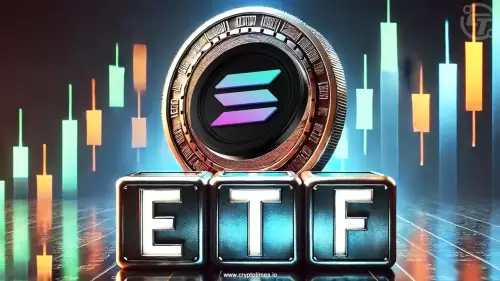 |
|
 |
|
 |
|
 |
|
 |
|
 |
|
 |
|
 |
|
 |
|
 |
|
 |
|
 |
|
 |
|
 |
|
 |
|
Cryptocurrency News Articles
HKMA explores blockchain-based efficiency in asset subscription using a stablecoin backed by the AUD converted into a Hong Kong CBDC
Jun 12, 2025 at 05:05 pm
The exercise involved a simulation in which a stablecoin backed by the AUD was converted into a Hong Kong central bank digital currency (CBDC) and subsequently used to purchase a tokenized money market fund.

output: A simulation by the Hong Kong Monetary Authority (HKMA) has spanned private and public blockchain environments to demonstrate how central bank digital currency (CBDC) may be used for cross-border investment in a tokenised money market fund.
The exercise involved converting a Australian dollar (AUD) stablecoin issued by ANZ into digital Hong Kong dollar (e-HKD) for use in purchasing the fund token on Ethereum’s testnet.
The test used ANZ’s proprietary blockchain, DASChain, which was connected to Ethereum’s public testnet using Chainlink’s Cross-Chain Interoperability Protocol (CCIP). This interoperability tool permitted the digital assets to be readily transferred and converted between the private and public blockchain environments.
After issuing A$DC stablecoin, ANZ’s proprietary blockchain was used to mint e-HKD, enabling access to the investment product. Meanwhile, Visa’s Tokenized Asset Platform (VTAP) facilitated the digital money lifecycle, and Chainlink’s infrastructure was used to manage the smart contracts necessary for transaction settlement under payment-versus-payment (PvP) and delivery-versus-payment (DvP) mechanisms.
The initiative brought together several financial institutions, including ANZ, Fidelity International, and ChinaAMC.
A broader overview
The trial included the application of on-chain identity verification and explored token issuance using both ERC-20 and ERC-3643 standards to assess regulatory compliance and security.
Asset managers involved in the project demonstrated how such digital money mechanisms could be applied to streamline the investment process, potentially reducing settlement time from days to seconds. These improvements could support continuous operations outside standard business hours, including weekends and public holidays.
The wider context of the pilot reflects growing institutional interest in tokenised asset markets, which are projected to exceed USD 2 trillion by the end of the decade. HKMA’s ongoing e-HKD+ programme builds on prior research and experiments in programmable money, expanding its scope to include use cases involving tokenised bank deposits and transactions across multiple blockchain types.
Officials from Fidelity and ChinaAMC, both of whom have previously issued tokenised funds, added that programmable digital currencies may reduce back-office complexity and increase access to investment products.
Disclaimer:info@kdj.com
The information provided is not trading advice. kdj.com does not assume any responsibility for any investments made based on the information provided in this article. Cryptocurrencies are highly volatile and it is highly recommended that you invest with caution after thorough research!
If you believe that the content used on this website infringes your copyright, please contact us immediately (info@kdj.com) and we will delete it promptly.






























































